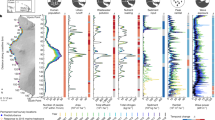Abstract
Coral reefs and other coastal ecosystems such as seagrasses and mangroves are widely recognized to provide protection against the devastating effects of strong waves associated with tsunamis and storms. The predicted warming climate brings to fore the role of these ecosystems in providing protection against stronger typhoons that can result in more devastating waves of greater amplitude. We performed a model simulation of storm generated waves on a Philippine reef, which is located along the path of tropical storms, i.e., at least 10 typhoons on the average pass through the study site yearly. A model to simulate wave propagation was developed using Simulating Waves Nearshore (SWAN) and DELFT3D-WAVE computer simulation software. Scenarios involving local monsoonal wind forcing and storm conditions were simulated. In addition, as climate change may also result to increased relative sea level, a 0.3 m and 1 m rise in sea level scenarios were also used in the wave model simulations. Results showed that the extensive reef system in the site helped dissipate wave energy that in turn reduced wave run-up on land. A significant reduction in wave energy was observed in both climate change, i.e., stronger wind and higher sea level, and non-climate change scenarios. This present study was conducted in a reef whose coral cover is in excellent condition (i.e., 50 to 80% coral cover). Estimates of coral reef growth are in the same order of magnitude as estimates of relative sea level rise based on tide gauge and satellite altimeter data, thus it is possible that the role of reefs in attenuating wave energy may be maintained if coral reef growth can keep up with the change in sea level. Nonetheless, to maintain reef growth, it is imperative to manage coral reef ecosystems sustainably and to eliminate the stressors that are within human control. Minimizing activities such as illegal and destructive blast and poison fishing methods, pollution and siltation, is crucial to minimize the impacts of high-energy waves that may increase with climate change.










Similar content being viewed by others
References
Arceo H, Quibilan M, Alino P, Lim G, Licuanan W (2001) Coral bleaching in Philippine reefs: coincident evidences with mesoscale thermal anomalies. Bull Mar Sci 69(2):573–593
Booij N, Ris RC, Holthuijsen LH (1999) A third-generation wave model for coastal regions: 1. Model description and validation. J Geophys Res 104:7649–7666
Buddemeier RW, Kinzie RA III (1976) Coral growth. Oceanogr Mar Biol Annu Rev 14:183–225
Burke L, Maidens J (2004) Reefs at risk in the Caribbean. World Resources Institute, Washington, DC
Chavez F, Ryan J, Lluch-Cota S, Niquen M (2003) From anchovies to sardines and back: multidecadal change in the Pacific Ocean. Science. Vol 299
English S, Wilkinson C, Baker V (eds) (1997) Survey manual for tropical marine resources – second edition. Australian Institute of Marine Science, ASEAN-Australia Marine Science Project. 390 pp
Hulme M, Sheard N (1999) Climate change scenarios for the Philippines. Climatic Research Unit, Norwich
Jinendradasa SS, Ekaratne SUK (2000) Linear extension of Acropora formosa (Dana) at selected reef locations in Sri Lanka. In: Proc. 9th Int. Coral Reef Symp. Bali, Indonesia. vol. 1
Kuenen H (1950) Marine geology. Wiley and Sons, New York
Licuanan W, Gomez E (1988) Coral reefs of the northwestern Philippines: a physiognomic-structural approach. In Proc. 6th Intl. Coral Reefs Symp., Australia 3:275–280
Nañola CL, Aliño PM, Arceo HO, Gomez ED, Quibilan MC, Uychiaoco AJ, Alcala AC, Campos W, Licuanan WL, White WT (2006) Status report on coral reefs of the Philippines-2004, pp. 1055–1061. Proceedings of the 10th Int’l Coral Reef Symposium, Okinawa, Japan, June 28 – July 2, 2004.
Pratchett MS, Wilson SK, Graham NAJ, Munday PL, Jones GP, Polunin NVC (2009) Coral bleaching and consequences for motile reef organisms: Past, present and uncertain future effects. In: van Oppen MJH, Lough JM (eds) Coral bleaching. Springer, Berlin Heidelberg, pp 139–158
Rahmsorf S (2007) A semi-empirical approach to projecting future sea-level rise. Science 315, 368-370
Rodolfo KS, Siringan FP (2006) Global sea-level rise is recognised, but flooding from anthropogenic land subsidence is ignored around northern Manila Bay, Philippines. Disasters 30(1): 118-139
Roth AA (1979) Coral reef growth. Origins 6(2):88–95
Slowey NC, Crowley TJ (1995) Coral cores from the Flower Gardens: a new tool for studying climate. Quarterdeck 3(3):4–7
Sudara S (1993) Implications of climate changes on marine productivity. In: Chou LM (ed) Implications of climate change in the East Asian Seas Region. 157 pp
University of Liverpool (2009) Curbing the cruel sea. http://www.liv.ac.uk/researchintelligence/issue24/seawalls.html. July 2009.
Veron JE N (1986) Corals of Australia and the Indo-Pacific.The University of Hawaii Press. 644 p.
Villanoy C, Salamante E (2000) Sea surface temperature variability in the seas surrounding the Philippines in relation to ENSO events Proceedings of the 21st Asian Conference on Remote Sensing II:P767–P771
Wilkinson C, Souter D, Goldberg J (eds) (2005) Status of coral reefs in Tsunami affected countries. Australian Institute of Marine Science
World Resources Institute (WRI) (2009). Coral reefs. http://wri.org/project/coral-reefs. July 2009
Yap HT, Gomez ED (1984) Growth of Acropora pulchra II Responses of natural and transplanted colonies to temperature and day length. Mar Biol 89:209–215
Yap HT, Aliño PM, Gomez ED (1992) Trends in growth and mortality of three coral species (Anthozoa: Scleractinia), including effects of transplantation. Mar Ecol Prog Ser 1992(83):91–101
Acknowledgements
The World Bank Office in Manila funded this study and partly by the Department of Science and Technology Climate Change Program Remote Sensing Information for Living Environments and Nationwide Tools for Sentinel Ecosystems in our Archipelagic Seas (RESILIENT SEAS). Cleto Nañola helped us in the fieldwork. Maribeth Fruto and Rizalde Ermino helped coordinate our fieldwork with the community and the local government units at the municipal and provincial levels.
This is University of the Philippines Marine Science Institute’s contribution 408.
Author information
Authors and Affiliations
Corresponding author
Rights and permissions
About this article
Cite this article
Villanoy, C., David, L., Cabrera, O. et al. Coral reef ecosystems protect shore from high-energy waves under climate change scenarios. Climatic Change 112, 493–505 (2012). https://doi.org/10.1007/s10584-012-0399-3
Received:
Accepted:
Published:
Issue Date:
DOI: https://doi.org/10.1007/s10584-012-0399-3




